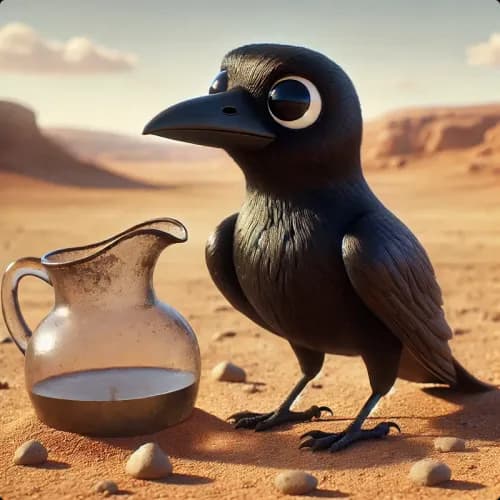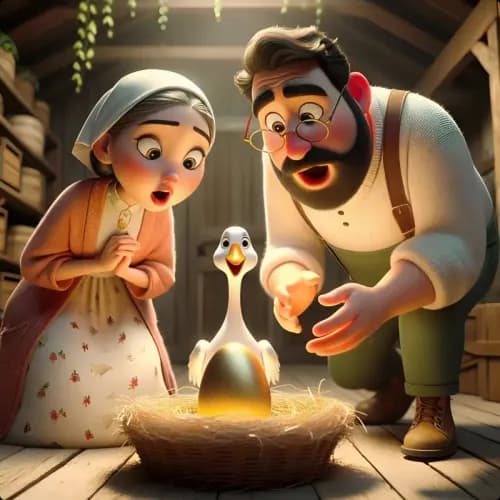Vishnu Sharma | India
El Mono y el Cocodrilo
Un mono astuto engaña a un cocodrilo que intentó traicionar su amistad para complacer a su esposa, y se separan.

Había una vez un mono muy astuto que vivía en un árbol cerca de un río. Un día, un cocodrilo nadó hasta el árbol y le pidió al mono que le diera algo de fruta. El mono amablemente le dio al cocodrilo algunas frutas.
Al cocodrilo le encantaron las frutas y volvió al día siguiente para pedir más. El mono, siempre generoso, accedió, y pronto el cocodrilo empezó a ir todos los días por más frutas. Se hicieron buenos amigos, y el mono confiaba mucho en el cocodrilo.
Un día, la esposa del cocodrilo probó una de las frutas y le gustó tanto que quiso más. Le preguntó a su marido de dónde venían esas frutas tan ricas. Ella se volvió muy ambiciosa y no solo quería las frutas, sino que también quería comerse el corazón del mono. El cocodrilo no quería hacerle daño a su amigo, pero su esposa le dijo que lo dejaría si no le traía el corazón del mono.
El cocodrilo ideó un plan. Le dijo al mono que su esposa lo había invitado a cenar y le preguntó si quería acompañarlo. El mono, confiado en su amigo, aceptó. Se subió a la espalda del cocodrilo, y juntos comenzaron a cruzar el río.
Cuando estaban en medio del río, el cocodrilo le contó al mono su plan. El mono se asustó, pero siendo muy listo, le dijo al cocodrilo que había dejado su corazón en el árbol y que necesitaban regresar para buscarlo. El cocodrilo le creyó y nadó de vuelta a la orilla.
Tan pronto como llegaron a la orilla, el mono saltó de la espalda del cocodrilo y se trepó rápidamente a su árbol. El cocodrilo se dio cuenta de que había sido engañado. Entonces, el mono le dijo que un verdadero amigo nunca lastimaría a otro por razones egoístas.
















